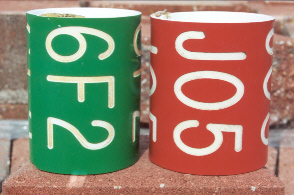The success of the Trumpeter Swan restoration is being monitored through reports of swan sightings. Information obtained through these observations lets us know of survival of the individuals, reproduction and gives us knowledge of habitat utilization.
You can help by reporting all sightings of marked Trumpeter Swans by filling out the electronic Trumpeter Swan Observation Form. Please record and provide as much information and detail as possible on the form.
Trumpeter Swan Reporting Form

When making observations of swan markers, carefully note the type (neck-collar or leg band) and color of the marker, then precisely record the alphanumeric code seen on the marker (this is usually 2 or 3 digits, something like Green 6P2 or White 3C).
Over 4,500 observations of Iowa Trumpeter Swans have been reported to the Iowa DNR from as far away as Colorado, Virgnia, Texas, and 2 provinces of Canada. Your observations help us learn more about Iowa’s Trumpeter Swans and inform important management decisions. We appreciate your help!